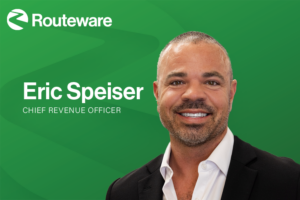This article is pulled from an interview with Tim Adkins, Product Marketing Manager and Natasha Guillo, Associate Product Manager. It has been lightly edited for clarity.
Q: Tell me about accessibility at ReCollect, and why it’s so important to get external certification.
Tim: It’s something that’s always been on our radar here at ReCollect. It’s a speciality all by itself, keeping up with compliance of accessibility guidelines. We’ve been gradually developing that expertise in-house. Natasha’s been getting up to speed along with our developers, and we go to an external auditor every year.
Natasha: There are automated tools available that are great, and our customers love them to help ensure our products integrate into their websites and branding. But to truly ensure compliance, we work with outside contractors, specifically the experts at David Berman Communications. These audits are annual and performed by the team there, which ensures compliance as we have people going through the process the way other people using the apps would, whereas an automated tool can sometimes go through the steps differently than a person would.
Q: You mentioned automated tools – are they something we’re looking to avoid or embrace (or somewhere in between)?
Tim: Automated tools can be a useful starting point but not the final authority on determining compliance.
Natasha: We’re always looking to improve how we audit and to add to our arsenal of tools. We’re looking at training staff more, as well as using some automated tools ourselves, so we can continuously check to ensure we are being equitable and accessible year-round.
Tim: This allows us to speed up the cycle in terms of checking with compliance.
Natasha: We’ll still have our experts with David Berman’s team, but we’re also exploring all of our options to supplement our annual audit.
Tim: By using the two methods together, we can have the best of both worlds in terms of keeping up with the moving goalposts as technology changes and the guidelines change but also doing that in a way that is consistent with having that human & expert check.
Q: Our level of WCAG certification is AA level – can you tell me more about what that means?
Natasha: There are 3 tiers of WCAG and we are consistently certified as WCAG AA, which is tier 2. So not only are we being certified for accessibility compliance, but we are going above the minimum requirements. WCAG certification is the standard for accessibility, specific to what we do.
Tim: We are also Section 508 Compliant. Section 508 is part of the Rehabilitation Act of 1973, a law in the United States that requires federal agencies to meet a strict set of accessibility requirements. We ensure our tools comply with this section, which means that government bodies (or any other organization) purchasing our tools don’t have to conduct an audit themselves. Additionally, many states also require compliance with Section 508, and the American Disability Act requires that all public websites are accessible to people with disabilities.
Q: How do our products help those who need to access them in different ways?
Tim: We’ve made some real improvements on our Waste Sorting Game. Overall, a big step for us has been enabling screen readers to work on our apps and widgets.
Natasha: As Tim said, we try to make sure that our products can be used with screen readers so that people with vision impairments can still get information they need from the tools, navigate through them, and acquire the information they seek. We also consider accessibility with our UI design, ensuring that everything is as clear as possible for different skill levels, so whether it’s a child or adult, the product can serve its intended purpose.
Q: Are there any specific improvements we’ve made pertaining to accessibility?
Natasha: There are some nitty-gritty details that our technical writers and developers dive into. For example, we want to make sure our tools work well for people using screen readers. Some ways we do this are by writing clear copy for our links in the tools and messages. People need to know what a link is for and where it will take them! We avoid “Click here” because this can be confusing and lack context when read by a screen reader. Another way we adapt is by adding alt text to our visual elements, like navigation buttons. We make the alt text distinguishable so it’s understood which button does what.
Q: How does our focus on accessibility reflect our values as a company?
Natasha: As a company, we believe in equity and we want to make sure our tools are accessible to everyone. We also believe our tools are able to make a bigger difference for the environment when everyone is able to use them and benefit from them.
Tim: It’s not just about checking the box, it’s an outcome for people that we make a priority of attaining consistently.
Want to learn more? Let’s Talk.
[/et_pb_text][/et_pb_column][/et_pb_row][/et_pb_section]




